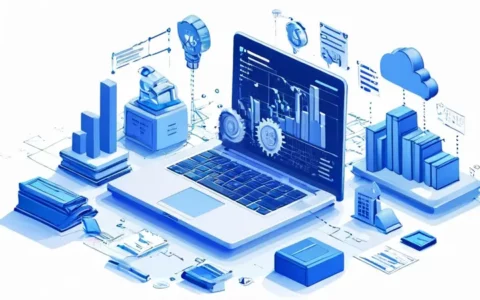
Programming is the English term for 编程. It involves writing code in various computer languages to create a set of instructions that computers can follow to perform specific tasks or solve problems. Detailed description begins with understanding that programming is integral to the creation and maintenance of software, apps, websites, and any digital tool or system. It requires a logical, structured approach and can be applied to accomplish tasks ranging from simple calculations to complex data analysis and user interface design. Proficiency in programming can lead to numerous job opportunities in the tech industry.
INTRODUCTION TO PROGRAMMING
Programming is a fundamental skill in the technology realm, an essential tool for developing software, websites, and applications. It is the process of designing and building an executable computer program to accomplish a specific computing result or to perform a particular task.
THE ESSENCE OF PROGRAMMING
At its core, programming revolves around the creation of instructions that computers can interpret and act on. Programmers use languages, each with its syntax and semantics, to write code. The elegance of programming is in its ability to turn complex problems into simple, executable tasks.
PROGRAMMING LANGUAGES
The choice of a programming language often depends on the task at hand. There are multiple types of languages, including high-level, general-purpose languages like Python and Java, and low-level, task-specific languages like assembly language.
APPLICATIONS OF PROGRAMMING
The realm of programming is broad, incorporating diverse industries such as web development, data analysis, artificial intelligence, and many more. It plays a pivotal role in the innovation and functionality of new technologies and systems.
LEARNING TO PROGRAM
Entering the world of programming starts with learning the basics of one or more programming languages and understanding how to solve problems algorithmically. Aspiring programmers must also familiarize themselves with different tools and development environments to efficiently write, test, and debug code.
PROGRAMMING TOOLS AND ENVIRONMENTS
Programming isn't just about writing code; it also involves using tools like Integrated Development Environments (IDEs), libraries, and frameworks that support the coding process by providing pre-written code, testing suites, and other functionalities that streamline the development.
CHALLENGES IN PROGRAMMING
Despite its structured nature, programming comes with challenges, from debugging complex errors to keeping up with the rapid evolution of technology and programming methodologies. However, these challenges often drive innovation and encourage continual learning and adaptation.
CAREER OPPORTUNITIES IN PROGRAMMING
Professionals skilled in programming have access to a wide spectrum of career opportunities. From software developers to data scientists and system analysts, programmers are crucial in creating the digital world and solving the problems that come with an increasingly technology-driven society.
CONCLUSION
Programming is a key skill that underpins the digital age. From the creation of simple desktop applications to the development of advanced artificial intelligence models, programming shapes the way we interact with technology. Its role in our daily lives and the global economy continues to grow, making it a vital field of study and work in the modern world.
相关问答FAQs:
1. What is the English term for coding?
The English term for 编程 (biāncóng) is coding or programming. Coding involves writing computer programs using specific programming languages to create software applications, websites, and other digital solutions. It is the process of translating human instructions into a language that computers can understand and execute.
2. Is coding the same as programming?
Yes, coding and programming are often used interchangeably, but there is a subtle difference between the two. Coding refers to the process of writing lines of code in a particular programming language, while programming encompasses a broader range of activities, including problem-solving, algorithm design, and software development.
3. Are there different types of programming languages?
Yes, there are numerous programming languages available, each with its own syntax and purpose. Some popular programming languages include Python, JavaScript, Java, C++, and Ruby. These languages serve different purposes, such as web development, scientific computing, game development, and mobile app development. The choice of programming language depends on the specific project requirements, developer preference, and target platform.
文章标题:编程英文叫什么,发布者:worktile,转载请注明出处:https://worktile.com/kb/p/1778996

 微信扫一扫
微信扫一扫  支付宝扫一扫
支付宝扫一扫 




